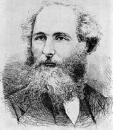|
|

Home
Contact
Info
Course
Info
Calendar
Homework
Lecture
Notes
|
|
|
|
Physics 415: Electromagnetic Theory I
Prof. S. Teitel stte@pas.rochester.edu ----- Fall 2002
Problem Set 1
Due Monday, September 23, in lecture
- Problem 1 [10 points]
Suppose the electric and magnetic fields, E and B, are given by scalar and vector potentials,  and A, that are not in the Lorentz gauge. Show that one can always find a gauge transformation that takes one to new potentials which are in the Lorentz gauge. Specifically, if and A, that are not in the Lorentz gauge. Show that one can always find a gauge transformation that takes one to new potentials which are in the Lorentz gauge. Specifically, if  is the scalar function of the gauge transformation, find an equation to solve for is the scalar function of the gauge transformation, find an equation to solve for  in terms of the orignial in terms of the orignial  and A, such that the new and A, such that the new  ´ and A´ are in the Lorentz gauge. ´ and A´ are in the Lorentz gauge.
- Problem 2 [20 points]
In lecture we discussed the decomposition of any vector function
f(r) into its curlfree and divergenceless parts,
f||(r) and f (r), as given by
Helmholtz's theorem: (r), as given by
Helmholtz's theorem:
f(r) = f||(r) + f  (r) (r)
where
f||(r) = — 
|
[
|
1
4
|
|

|
d3r´ |
 ´ · f(r´) ´ · f(r´)
|
r-r´|
|
|
]
|
and
f (r) = (r) =  
|
[
|
1
4
|
|

|
d3r´ |
 ´ ´  f(r´) f(r´)
|
r-r´|
|
|
]
|
Consider f(k), the Fourier transform of f(r):
|
f(r) =
|
1
(2 )3 )3
|
+

-
|
d3k eik · r
f(k) |
Using the results above, find expressions for the Fourier transforms of the curlfree (longitudinal) and divergenceless (transverse) parts of f(r).
You will need to know that the Fourier transform of
1/|r|
is
4 /k2, and that the Fourier transform of the Dirac delta function /k2, and that the Fourier transform of the Dirac delta function  (r) is eik · r (r) is eik · r
|